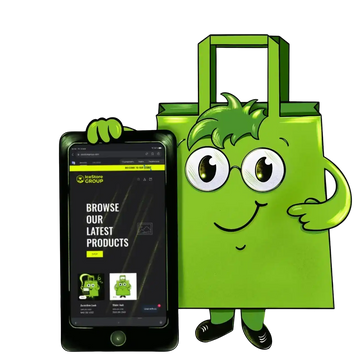In today’s competitive eCommerce landscape, being one step ahead of your customers can define your success. Predictive marketing empowers Shopify merchants to forecast consumer needs, reduce churn, and optimize every marketing dollar. With accurate data and predictive analytics, you can transform guesswork into strategy — and strategy into growth
What Is Predictive Marketing?
Predictive marketing is the use of data analytics, machine learning, and statistical models to forecast future customer actions. By analyzing historical and behavioral data—such as purchase history, browsing activity, demographic information, and engagement across email or social channels—Shopify businesses can understand what drives their customers and anticipate what they’ll do next.
How to Use Predictive Marketing
1. Collect and Unify Customer Data
Accurate predictions start with clean, structured data. Collect information from your CRM, POS, email marketing tools, and Shopify analytics dashboards. To avoid duplicate or inconsistent data, unify all sources into one centralized database—like a Customer Data Platform (CDP).
Relevant data types include:
-
Purchase and browsing history
-
Search and engagement patterns
-
Demographics and geography
-
Email and ad interaction rates
-
Customer service communication logs
When these data streams are synchronized, your predictive tools can identify behavioral patterns with far greater accuracy.
2. Apply Predictive Models
Once your data is ready, apply models that match your marketing objectives:
-
Classification Models: Group users by likelihood to convert or churn.
-
Regression Models: Predict numeric outcomes like sales revenue or CLV.
-
Recommendation Engines: Suggest additional products based on past purchases.
-
Clustering Models: Discover natural customer segments within your data.
-
Time-Series Models: Forecast seasonal demand or traffic fluctuations.
For example, if you notice recurring spikes in sales on Sundays, time-series forecasting can help allocate ad budgets more effectively during those high-conversion windows.
3. Segment Your Customers
Predictive segmentation divides customers into specific behavioral or intent-based clusters—such as “high-value repeat buyers” or “at-risk customers.” This allows for tailored campaigns and personalized experiences.
Shopify’s built-in segmentation tools can automatically generate such groups, or your team can define custom segments manually using predictive attributes.
4. Deliver Personalized and Timely Content
Use predictive insights to personalize the customer journey at scale. Deliver dynamic content—emails, SMS, push notifications, or product recommendations—based on a shopper’s likelihood to purchase.
Example: A customer who’s viewed water filters three times in one week could automatically receive a discount offer on that category before leaving your site.
5. Test, Measure, and Optimize
Predictive marketing isn’t a one-time setup. Continuously monitor campaign performance using A/B testing. Compare predictive-based audience segments with control groups to validate the model’s impact.
If performance drops, update your data sources or retrain your models to improve accuracy.
Applications of Predictive Marketing
Dynamic Pricing
Adjust product prices automatically according to market trends, competitor activity, and predicted demand. For example, a Shopify store selling seasonal goods can reduce prices before demand drops or increase them before a surge—maximizing revenue without harming conversion rates.
Predictive Segmentation
Automatically divide customers into meaningful groups based on predicted actions, such as “likely to buy” or “likely to unsubscribe.” This saves time and boosts marketing efficiency by replacing manual segmentation with data-driven logic.
Product Recommendations
Use algorithms to suggest items each customer is most likely to buy. For example, if someone purchases a reverse osmosis system, the platform can recommend filter cartridges or installation kits. Personalized recommendations increase both AOV and customer satisfaction.
Social Media Optimization
Predictive tools can analyze your previous content’s engagement data and suggest when and what to post. Knowing which visuals, captions, and times perform best helps you get more visibility for less ad spend.
Churn Prevention
Identify early warning signs of customer churn, such as reduced engagement or frequent stock alerts. For instance, if customers often unsubscribe after encountering out-of-stock products, you can set up automatic restock notifications to re-engage them before they leave.
Customer Lifetime Value (CLV) Forecasting
Predictive CLV models reveal your most profitable customers. You can then create loyalty programs, early-access offers, or personalized campaigns that nurture these VIP buyers — ensuring sustained growth.
Risks and Limitations of Predictive Analytics
Low-Quality or Incomplete Data
If your source data is inaccurate, your predictions will be too. Small or new businesses often face this issue due to limited transaction history. The result: unreliable forecasts and inefficient ad spend.
Outdated or Biased Data
Predictive models rely on historical behavior. If your company’s operations have recently changed—like expanding delivery zones or launching new product lines—the old data may no longer reflect reality, leading to poor targeting.
Unexpected Market Shifts
Models assume consistent market behavior. But external shocks—such as pandemics, supply chain crises, or regulatory changes—can instantly make your models irrelevant. Predictive systems should be reviewed frequently to adjust for such anomalies.
Privacy and Compliance Risks
Handling customer data comes with legal responsibilities. Ensure full compliance with GDPR and other privacy regulations. Mishandling sensitive data can lead to reputational and financial damage.
Why Choose IceStoreGroup
At IceStoreGroup, we specialize in developing and scaling Shopify and Shopify Plus stores using automation, data-driven marketing, and custom integrations. Our mission is to help businesses predict, personalize, and profit.
Our advantages:
-
Custom Shopify development and integrations
-
Predictive analytics setup and automation
-
Scalable architecture for growing stores
-
Ongoing support and optimization
Start using predictive marketing to transform your Shopify business. Contact IceStoreGroup today and learn how to use data intelligence to increase revenue and customer retention.
📧 Email: info@icestoregroup.com
🌐 Website: https://icestoregroup.com
📱 Telegram: https://t.me/icestoregroupshopify
🔔 Follow our Telegram channel: https://t.me/icestoregroup
🔥 7-Day Free Trial 🔥
Experience IceStoreLab in action:
✅ Daily reports via Telegram and Email
✅ Competitor change history
✅ AI recommendations and visual reports
See for yourself how data turns into actionable decisions.
👉 Start your free trial now

